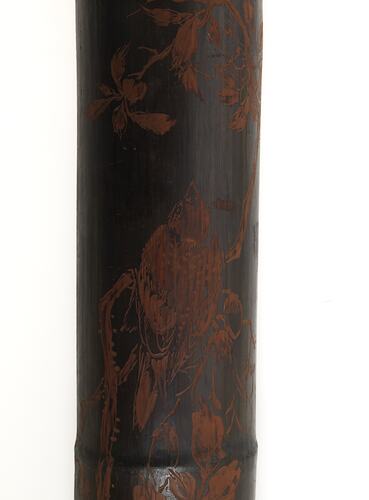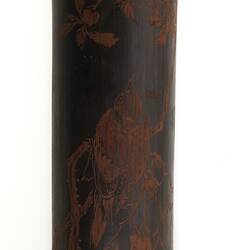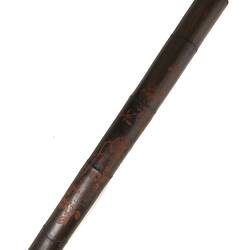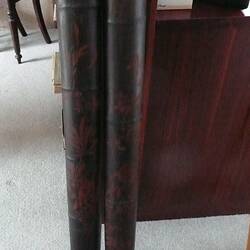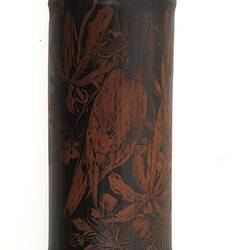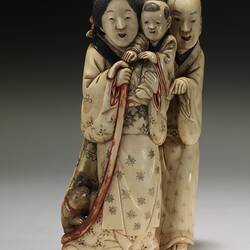Summary
Carved bamboo decorative panel manufactured in Japan, probably during the early Meiji Period, circa 1868-1880.
Ornamental bamboo carving has a long tradition in both China and Japan. The motifs used on this example of the peony, magnolia and Chinese crabapple represent flowers that had long been revered by both cultures. In China, peonies were known as the king of all flowers and since the Tang dynasty have become a favourite motif used by artists. They are often used in art to represent wealth and elegance.
Characters engraved into the bamboo suggest a date, based on the Chinese sexagenary cycle (also known as the 'Branches and Stems' calendar), in the year of the Metal Snake, which occured twice in the nineteenth century, in 1821 and again in 1881. Other characters suggest it was produced in Autumn, with the mostly likely date of manufacture being in the northern hemisphere autumn of 1881.
It is possible it was produced for an export market. It carries the names of Wu Zhifan, one of the most renowned Chinese bamboo carvers of the late seventeenth century. If this signature is genuine, it may date as early as 1701, which was also a year of the Metal Snake. However, it is unlikely to be so old, nor does the style reflect Wu's high relief and open-cut work. The name of such a renowned master carver has probably been added to appeal to the Western audiences attending the International Exibitions.
Physical Description
Hollowed out piece of bamboo, cut vertically in half, painted in dark paint, and carved. Features an image of birds and bamboo. Kanji signature incised on front of panel.
More Information
-
Collection Names
-
Collecting Areas
-
Acquisition Information
Cultural Gifts Donation from Dr Will Twycross, 23 Jan 2009
-
Acknowledgement
Donated through the Australian Government's Cultural Gifts Program
-
Place & Date Made
-
Place & Date Exhibited
Royal Exhibition Building (REB), Nicholson Street, Carlton, Greater Melbourne, Victoria, Australia, 1880-1881
-
Collector
Mr John Twycross, Elsternwick, Greater Melbourne, Victoria, Australia, 1880
-
Classification
Royal exhibition building, International exhibitions, Exhibition heritage
-
Category
-
Discipline
-
Type of item
-
Overall Dimensions
105 mm (Width), 1180 mm (Height)
-
Maximum dimensions
11 mm (Length), 43 mm (Width), 1182 mm (Height)
Measurement From Conservation.
-
Keywords
Bamboo, Carving, Exhibitions: Melbourne International, 1880-1881, Japanese Art, Royal Exhibition Building, Royal Exhibition Building: History of Events, 1879-1899
